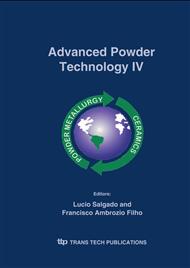p.552
p.558
p.564
p.569
p.575
p.581
p.587
p.594
p.600
Creep Behavior of Multi-Cation α-SiAlON Partially Stabilized Produced with an Yttrium-Rare Earth Oxide Mixture(CRE2O3)
Abstract:
a−SiAlON (a’) is a solid solution of a−Si3N4, where Si and N are substituted by Al and O, respectively. The principal stabilizers of the a’-phase are Mg, Ca, Y and rare earth cations. In this way, the possible use of the yttrium-rare earth oxide mixture, CRE2O3, produced at FAENQUIL, in obtaining these SiAlONs was investigated. Samples were sintered by hotpressing at 17500C, for 30 minutes, using a sintering pressure of 20 MPa. Creep behavior of the hot-pressed CRE-a-SiAlON/b-Si3N4 ceramic was investigated, using compressive creep tests, in air, at 1280 to 1340 0C, under stresses of 200 to 350 MPa, for 70 hours. This type of ceramic exhibited high creep and oxidation resistance. Its improved high-temperature properties are mainly due to the absence or reduced amount of intergranular phases, because of the incorporation of the metallic cations from the liquid phase formed during sintering into the Si3N4 structure, forming a a’/b composite.
Info:
Periodical:
Pages:
575-580
Citation:
Online since:
November 2005
Keywords:
Price:
Сopyright:
© 2005 Trans Tech Publications Ltd. All Rights Reserved
Share:
Citation:


